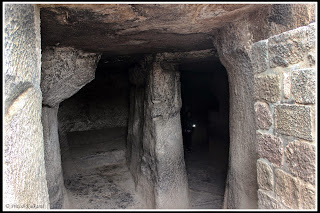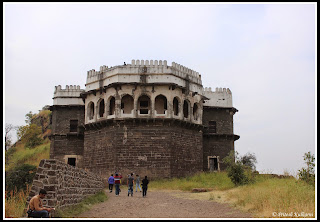AJINTHA VERUL VISIT
It was the last day of Diwali festival. i.e Bhaubeej After celbrating this day with relatives we left pune by 4 PM. Our Target was to reach manjari by 8.30 PM and take Rest. Amey's (one of my friend) uncle joined us for next 4 days.
The drive till Ranjangaon was a bit difficult due to heavy traffic. After crossing Ranjangaon, it was a smooth drive till Manjari. Due to some cyclone on the west costal area, the weather was cloudy and rain accompanied us till Aurangabad which made us our journey more pleasant. We took a pit stop at a town called Super for snacks and reached Manjari by 9 PM.




It was the last day of Diwali festival. i.e Bhaubeej After celbrating this day with relatives we left pune by 4 PM. Our Target was to reach manjari by 8.30 PM and take Rest. Amey's (one of my friend) uncle joined us for next 4 days.
The drive till Ranjangaon was a bit difficult due to heavy traffic. After crossing Ranjangaon, it was a smooth drive till Manjari. Due to some cyclone on the west costal area, the weather was cloudy and rain accompanied us till Aurangabad which made us our journey more pleasant. We took a pit stop at a town called Super for snacks and reached Manjari by 9 PM.
Expenses: Car Petrol: INR 3000/- (approx. 40 lit at 76/Lit)
Toll 1: INR 45/- (single journey)
Toll 2 (at Nagar): INR 30/- (single journey)
Toll 3 (at Khadka): INR 30/- (single journey)
Snacks at supe: INR 90/- (Vada Pav and tea)
Day 1: 26th Oct 2014 – Manjari – Daulatabad – Ellora - Grishneshwar (Total Distance: 300 km):
We woke up a bit late by 7 AM, spent some time with friend’s relatives. After breakfast, we left for a day trip by 9.30 AM. It was a lazy start for our trip. Our first destination was Daulatabad Fort. After 45-50 km drive, we reached the parking area of the Fort. Daulatabad fort is a 12th-century structure situated about 15 kilometres from the city of Aurangabad. It was built in the 12th century by the Yadava King of Bhillima V and was called Devgiri. Devagiri was also known as “Devgad”, “Surgiri” and “Dhargiri”. Then, it was acquired by Alauddin Khilji who made it a Mughal stronghold. In the early 14th century, Sultan Mohammed-bin-Tughlak, moved his capital from Delhi to Devgiri and renamed this fort city as Daulatabad. Fort consists of multiple layers of massive walls, deep water trench around the fort, and complex arrangement of entryways for a strong defence.
After crossing the entrance gate, you can see strong walls with guard rooms and different types of cannons kept for display. The arrangement of the entrance is in such a way that any enemy entering the gates is subject to attack from all sides. The walls surrounding the main entrance gate are still in good shape. After crossing the entrance structures, we took a walk towards the main fort area. On the left side of the walkway, you can see huge water tank known as Hatti Talav (meaning, Elephant Lake). This artificial lake is 38 meters long, 38 meters wide and 66 meters deep. Due to the hugeness, it is known as Hatti Talav. This might have been the main source of water for the entire fort.

Moat of Fort After visiting such a massive fort, our next destination was Ellora Caves. We had lunch at a roadside dhaba and reached Ellora caves. The Ellora Caves are located about 28 km from the city. The actual name of Ellora cave is Verul but it was difficult to pronounce for the British and thus was renamed as Ellora. The main attraction in Ellora cave is Kailashnatha Temple. The Kailashnatha Temple is cave number 16 amongst the 34 caves of Ellora. Building the Kailasa temple self-consumed around 200 years to complete. Apart from the grand Kailashnatha Temple, there are 33 rock-cut caves in all at Ellora; some breathtaking and some that could be bypassed. Of the 34, 12 are Buddhist caves, 17 Hindu and 5 Jain caves. It is recommended that you must visit cave numbers – 10, 11, 12, 15, 29, 31, 32 and 33. The Buddhist caves are rich in paintings and iconography. Cave 10 represents a Buddhist Chaityagriha (prayer hall).



The Kailashnatha Temple
